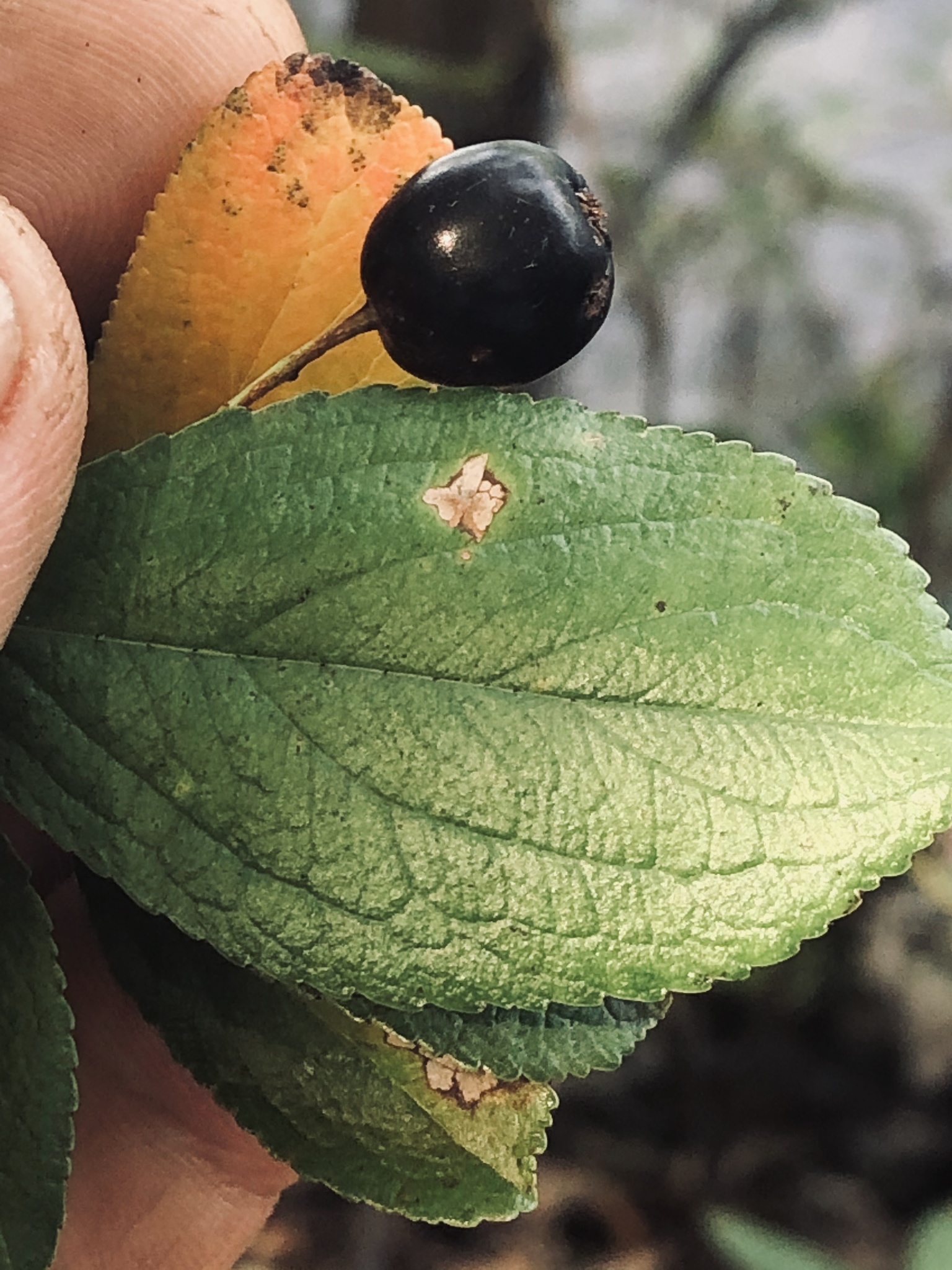Map Snapshot










28 Records
Relationships
Host plant for the Large Lace-bordered Moth.
Host plant for Coral Hairstreak.
Seasonality Snapshot
Source: Wikipedia
You can help expand this article with text translated from the corresponding article in Russian. Click [show] for important translation instructions.
|
This article needs additional citations for verification. (October 2024) |
| Aronia melanocarpa | |
|---|---|

| |
| Scientific classification | |
| Kingdom: | Plantae |
| Clade: | Tracheophytes |
| Clade: | Angiosperms |
| Clade: | Eudicots |
| Clade: | Rosids |
| Order: | Rosales |
| Family: | Rosaceae |
| Genus: | Aronia |
| Species: | A. melanocarpa
|
| Binomial name | |
| Aronia melanocarpa | |
| Synonyms | |
|
Synonymy
| |
Aronia melanocarpa, called the black chokeberry, is a species of shrubs in the rose family native to eastern North America, ranging from Canada to the central United States, from Newfoundland west to Ontario and Minnesota, south as far as Arkansas, Alabama, and Georgia.[1] This plant has been introduced and is cultivated in Europe.
It is a branching shrub with glossy dark green leaves that take on a red color in the autumn; it grows well in the sun and part-shade, often to heights of six feet (1.8 m) or more, forming clumps by means of stems rising from the roots. Its flowers are white or pink, appearing at the end of spring and producing black fruits in September. The plants are relatively easy to clone and root, with summer being the optimal time to take cuttings. Some birds eat the berries.
When raw, the fruits are astringent,[2] but the flavor improves when used in recipes with added sugar.
Gallery
[edit]-
Fresh berries
References
[edit]- ^ "Aronia melanocarpa". County-level distribution map from the North American Plant Atlas (NAPA). Biota of North America Program (BONAP). 2014.
- ^ Pankhurst, Richard J. (2014). "Aronia melanocarpa". In Flora of North America Editorial Committee (ed.). Flora of North America North of Mexico (FNA). Vol. 9. New York and Oxford: Oxford University Press – via eFloras.org, Missouri Botanical Garden, St. Louis, MO & Harvard University Herbaria, Cambridge, MA.
External links
[edit]- "Aronia melanocarpa". Plants for a Future.
- Photo of herbarium specimen at Missouri Botanical Garden, collected in Missouri in 1989











